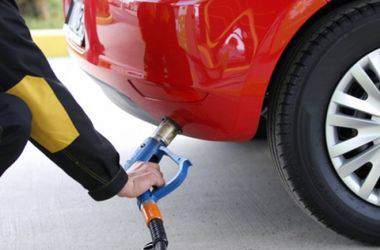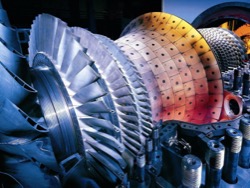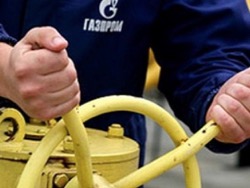Experts gave advice to those who want to buy a car on gas.
Of all the ways to reduce fuel costs translation engine gas remains one of the most attractive of dreams. Low cost, high octane number, is clean and complete combustion, a lot of fossil fuels… in addition, the methane gas is easy to obtain for many industries it is a byproduct that must be disposed of. The heavier propane and butane also have to be disposed of, because they are a byproduct of oil production, and it is that required very, very much. Except it turns out that you burn gas in an internal combustion engine not so easy.
Why gas?
You probably know that the first engine worked for the gas mixture, but in transport the internal combustion engines came only after it was invented a remarkable device – the carburetor. It was possible to create a fuel mixture with the desired ratio of fuel and air, and the gasoline car won the planet. Now I will tell you what a good car on gas, but why is their so little… And why not more.
The first fuel crises of the seventies of the XX century forced people in many countries to start looking for alternative fuel for engines. Brazil found a solution to use alcohol, France began to implement diesel engines, and the Soviet Union took gas-cylinder cars, and seriously. However, in some other countries tried to solve the technological problems of gas supply, but a planned economy take scale. Across the country were built filling stations for liquefied and compressed gas, the automotive industry has mastered dozens of models of cars designed to operate on gas.
However, mostly it was trucks and chassis small-and medium-duty trucks, for example, ZIL-138 or GAS 53-19 and 53-27. The output of these machines was in the tens of thousands of copies, and they are allowed to really save on gasoline, because gasoline V8 these cars “eat” a lot of it.
For and against
In addition to saving on fuel, gas equipment allowed seriously to clear the exhaust. Despite the imperfection of systems of gas supply, compressed gas (methane) provided clean exhaust almost at the level of modern cars. And liquefied still had significantly lower emissions than petrol, due to better vaporization and combustion quality of the fuel mixture. In addition, the gas does not dissolve the oil film on the cylinder walls even with choke and cold starts, does not form solid particles when burned, well ignited in the over-rich mixture.
Of course, the obvious disadvantages of such solutions have been. First, when working on gas power slow speed gasoline engines were much lower. Second, the reserve was reduced at least twice, and the vehicles on compressed gas and decreased load capacity – the weight of the cylinders was more than a ton. And also increase the longevity of the motors, as described in the prevailing textbooks for trucking technical schools, did not happen. Burned valves, cylinder head gaskets, periodically “fired” in the intake, damaging the fuel system.
Distribution of LPG in the world
Anyway, nationwide savings were significant and attempts to inject LPG turned off only after the collapse of the Soviet Union. But the population of the gas-cylinder cars of the Russian Federation has taken a leading position in the world, although not at the expense of trucks, and by introducing the gas supply to “cars”. Backlog remained to this day, although the leadership is hopelessly lost.
Pitfalls
After reading the flyer installers LPG think that is the best solution. The gas tank can be put instead of “chute” which is still used very rarely. The price of gas is less than half the cost of gasoline. Octane rating of about 105 units, and the forced engines will appreciate it. Yes, it seems like the emissions are reduced, the oil in the engine lasts longer. In General, this set of advantages it is strange that gas is cheaper than gasoline.
In what is not told is why car manufacturers do not release their gas versions EN masse. And why are the engines of German vehicles with gas-cylinder equipment are very different from more massive petrol.
In fact, difficulties when converting engine to gas power is more than enough. And problems on all fronts, from fire safety to the nuances of engine wear.
The risk of explosion
Security. Gas cylinder high pressure are rather durable, and even if it hurt, methane will quickly dissipate in the atmosphere – it is lighter than air. That’s only if cylinder is heating (for example, if you will turn the wheel), then down the drain. The exploding gas cylinders, you’ve probably seen in the news.
The low pressure cylinders for propane-butane mixture, which are on 90% of all the gas-cylinder cars, not so strong, only slightly stronger than the usual gasoline tank. Nail them not to break, but when you crash they break easily. A mixture of petroleum gas in them is heavier than air and therefore dissipates very reluctantly, creating a concentration sufficient for ignition. Besides, to ignite the mixture of air and gas is lighter than petrol, quite the weakest spark. And even if the container is not damaged, still there is a risk of gas leaks, and especially dangerous system with liquefied gas.
Given that this kind of system “on the knee”, the build quality can vary from disgusting to satisfactory. In most gas cars smell of gas – this means that constantly has a small leak. And in case of any accidents the risk of leakage and ignition is increased in multiples.
The effect on the motor
Saving on fuel is a wonderful thing. But we must remember that the cost of the car is not only gas. Any car has to be serviced, and the car with a gas powered requires special maintenance of fuel equipment. Moreover, Nezabudka installation without proper documentation is a potential problem in the near future. If something sasbout in the engine, even a professional master you will not understand, what there such heaped up.
In addition to the issues related to failures of the control system, there are questions to the reliability of the “iron” of the motor. Greater thermal load on the motor when operating on gas fuel knew long ago. Gas has a very low latent heat of evaporation, and therefore almost does not cool the fuel, unlike gasoline and alcohol. Thus, increasing the temperature of the cylinder head, intake valves and pistons.
In addition, the gas removes deposits on intake valves, and there is a gradually growing “coat” of oil deposits from the crankcase ventilation system and engines with direct injection. And exhaust valves, so all in the high risk area, because the octane number of fuel is very high and the compression ratio not significantly increase due to the need to preserve job opportunities not gasoline – all while CNG filling stations are much rarer than gasoline. This increases EGT – exhaust gas temperature, and hence the temperature of the entire exhaust system, including valves, manifolds, lambda sensors and catalysts. And what would break first – a complex question.
In addition, the gasoline contains a little oily fractions and lubricates the valves, which improves their working conditions. And gas, even in direct injection liquid phase, can not do this. In addition, the clearances of the valves and operation of hydraulic lifters (if any) calculated at a predetermined temperature. So if you change the conditions of combustion may loose valve closure, the deterioration of heat transfer in the pair “valve – valve seat and a more sharp increase in the temperature of the valves with the risk of detonation, despite the high octane number of gas fuel.
On many engines the use of gas deteriorates and grease the top of the cylinder, resulting in the rapid formation of a ring of generation and the deterioration of starting qualities. It’s a combination of several difficult factors taken into account – the increase in temperature and expansion of the piston due to the lack of cooling with gasoline, lack of thinning and “blur” the oil film in the area stop top compression ring at TDC and the lack of lubrication in gasoline.
Plant vs garage
As you can see, problems. Manufacturers know about them, and the engines to run on gas in the factory performance are very different from “normal”. So, the list of alterations in motor VW 1.4 TSI ЕА111 “gas” is very significant, it involves a different cylinder head, different valves, new pistons and even the rods and liners, oil pump high pressure oil and recalibrated on the lower temperature thermostat. This motor likely has a resource of not less than the petrol counterpart.
But what it can do in the workshop handicraft which establishes a system of gas supply, made in small quantities and really do not even tested on a similar motor? Max – change the thermostat and put the system of additional supply of lubricant in the inlet. And the injection of water or methanol is almost certainly referred to as a “steep tuning”, and not to reasonable for a motor with LPG precaution.
What is the result?
It turns out that the car is with LPG – frankly unsuccessful option to buy on the secondary market, it should just run like fire. Firstly, HBO are putting those who travels a lot, so she has high mileage. Secondly, those who are inclined to maximize savings, but do not want to invest an extra penny when you buy and use.
And, of course, wear even with the same mileage would be more than machines with completely regular power supply system, because all this Amateur work, even when operating on gasoline most of the time will have a negative impact on the accuracy and “bezglyuchnost” the on-Board systems. However, to put its own may not be such a bad idea. Especially if you know exactly what is to be feared and what is possible.








